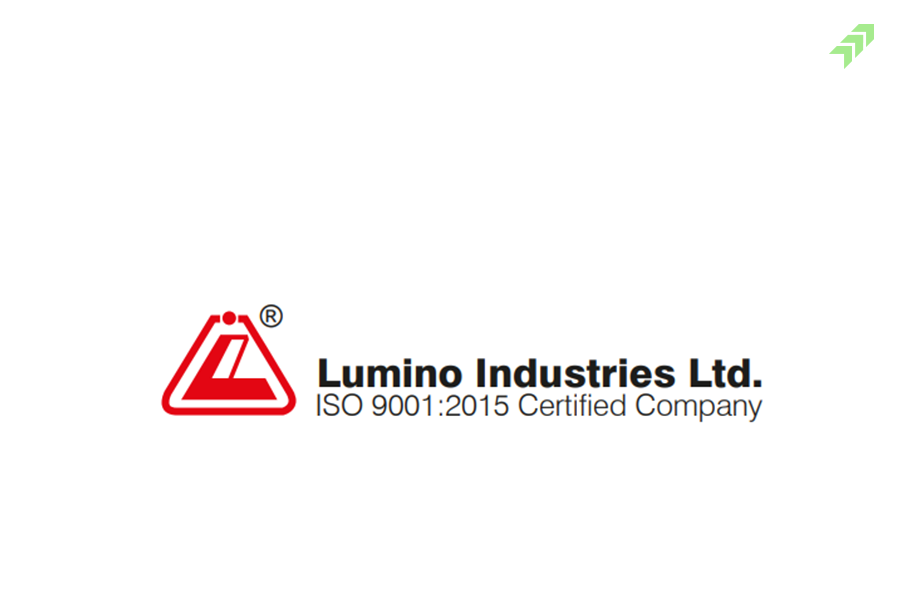Equity, also known as shareholders’ equity, is the shareholders' percentage of ownership in the company. It is the amount of money that would be returned to a company's shareholders if all of the assets were sold and all of the company debt was paid off in the event of liquidation. It is used by analysts in fundamental analysis to determine the net worth of the company.
Shareholders’ Equity=Total Assets−Total Liabilities
Components of Shareholder Equity
Retained Earnings are profits that are not given away to shareholders as dividends but are instead reserved for reinvestment back into the business. Consider retained earnings to be savings because they represent a total of profits that have been saved and set aside or reserved for future. As the company continues to reinvest a portion of its earnings, retained earnings grow over time.
If a company believes it cannot earn an adequate return on investment from its retained earnings, it will frequently distribute those earnings to shareholders as dividends or do buybacks. Over the course of time, accumulated retained earning reserved can become greater than shareholder’s equity.
Treasury stock, also known as reacquired stock, is stock that the company has purchased back from existing shareholders for its own use. Companies do stock repurchase when management is unable to deploy all of the available equity capital in ways that will provide the best returns. Company shares that are repurchased become treasury shares. They can either remain in the company's custody to be sold later to raise funds, or they can be retired.
Outstanding shares are an important component of shareholders' equity because they represent the number of shares of a company that are traded on the secondary market and thus accessible to investors. Outstanding shares include all restricted shares held by the company's officers and insiders (employees), as well as the equity portion owned by institutional investors. The right to attend annual shareholder meetings and vote on the election of the company's board of directors is granted to common stockholders. The number of outstanding shares rises when a company issues new shares or employees exercise stock options. Versus, if the company buys back some of its issued shares through a share repurchase program, the number of outstanding shares will decrease.
Additional Paid In Capital (APIC) is the value of share capital higher than its stated par value. It is an accounting item and recorded on the balance sheet under Shareholders' Equity. APIC increases when an investor purchases newly issued shares directly from a company during its IPO or FPO. APIC is only reliant on the equity issue price, not the current market value. When a company's shares begin trading on a public exchange, price movements have no effect on the APIC account on the balance sheet. APIC is also known as Contributed Surplus or Contributed Capital in Excess of Par.
Formula:
APIC = (Issue Price – Par Value) x Number of Shares Acquired by Investors.
There are three basic types of equity: Common shares, Preferred Shares, warrants
Common equity
The company's primary capital is represented by common stocks. The company offers common equity shares in order to raise capital from an investor in order to invest in new projects, reduce debts and improve financial ratios, build cash buffers for economic downturns, and make strategic acquisitions. A common share entitles an investor to one vote for each share of common stock held. Common stocks have the potential to offer investors with exponential returns as compared to any traditional assets. It also pays dividends to shareholders in addition to capital appreciation (at company discretion).
There are various classes of equities which represent different natures, rights, and obligations like Class A, Class B,
- Class A
When a company grows in size and the promoters/owners want to retain management control, they can either increase their shareholding in the company or divide their shareholding into various parts based on voting rights. Class-A shares have more voting rights per share than common stock. Class A shares are not publicly traded. It also keeps the company from being taken over by a competitor. - Class B
Class B shares are ordinary common equity shares with one voting right per share. These shares are traded on the secondary market. The price of a share with fewer voting rights trades at a discount then the shares with more voting rights. Individual and institutional shareholders own Class A stock, which entitles them to one vote; Zuckerberg, executive management, and directors own Class B stock, which entitles them to ten votes. Zuckerberg owns 75% of Facebook's Class B shares, giving him 58 percent of the company's vote.
Preferred stocks
Preferred shares / Preferred stocks are special stocks that hold the special right of getting dividends before any dividend is issued to common equity stocks on the distribution of profit sharing. If a going concern company files for bankruptcy, then preferred shares are given preferential rights on residual company assets and dividends as compared to common stock equity shares. The dividends are fixed for preferred shares and they don't have any voting right in the business proceedings
There are different types of preferred shares:
- Cumulative preferred shared and non-cumulative preferred shares
Preference shareholders get a fixed guaranteed dividend. In cumulative preference shares, if the company fails to pay the dividend in a given year, the dividend is accumulated and paid in subsequent years as and when the company generates sufficient profits. Whereas if the company fails to pay the dividend in a particular year, then the same is not accumulated and paid in future years as and when the company makes ample profits - Convertible preferred shares and non-convertible preferred shares
Preference shared enables investors to convert their preferred stocks into common equity shares at a pre-determined price. On the other hand, non-convertible shares can't be converted into common equity shares. Convertible shares are beneficial for the investor if the common stocks of the company provide compounding growth over time - Redeemable preferred shares and Irredeemable preferred shares
In the case of redeemable preference shares / callable preference shares, the issuing company can purchase the preference shares back from the holder before maturity. Non-redeemable shares are the exact opposite of it. They can only be redeemed if the company shuts its operations or liquidates itself - Adjustable-rate preference shares
Adjustable-rate preferred stock pays floating rate dividend. The rate of dividend on this stock depends on the market prevalent rate. The two parameters used in paying dividend yield in adjustable rate preferences share are; caps and floor. A floor rate is the minimum dividend yield a preference share will pay, even if interest rates drop below the given rate. A cap rate limit is the maximum dividend yield pay-out that a preference share will pay
Warrant
Warrants are like call options, which give investors the right but not obligation to buy securities in the company at a specified date in the future, at a price determined by the parties today. Warrants do not pay dividends and have a longer maturity period (typically 2-3 years) than options. Warrants lead to dilution of company holding; in case the warrants are exercised the company has to issue new stock resulting in dilution of equity
Types of warrants
Conventional warrants are issued in tandem with bonds, as a sweetener that allows the issuer to offer a lower coupon rate. These warrants are often detachable, which means they can be separated from the bond and sold on secondary markets before they expire. In addition to preferred stock, a detachable warrant can be issued.
Wedding warrants, also known as harmless warrants, and are not detached. If the holder chooses to buy another bond from the same company that quantitatively characterizes the original bond, the bond must be returned to the issuer. The clause is introduced by the issuer to maintain a specific level of debt. It effectively ensures that when new debt is issued, a corresponding amount of debt is repaid.
Because covered warrants are issued by financial institutions rather than corporations, when covered warrants are exercised, no new stock is issued. The warrants are "covered" in the sense that the issuing institution already acquired or has the ability to acquire the underlying shares. As opposed to other types of warrants, the underlying securities may be currencies, commodities, or any number of other financial instruments.
Why do company issue warrants?
There are many reasons why company issue warrants
- To raise capital
If a company requires additional capital, it can sell warrants in the open market or to financial institutions. At early stage, a warrant can be both helpful and deadly. Warrants eliminate the provision of paying out dividends to shareholders, leaving the company with capital to fund its projects - To fund a acquisition
Likewise, a company may include warrants in addition to cash to fund the acquisition of another company - To encourage bond or preferred stock purchases
A company may issue warrants to facilitate the float of its bond or preferred stock. It may also issue bonds with warrants attached, allowing buyers to profit from rising share prices by exercising their warrants when share values reach enticing conversion thresholds - To attract employees
Warrants can be used as an additional component of remuneration to attract new employees and retain current employees. These warrants are typically European-style contracts with exercise dates several years in the future to encourage new employees to stay with the company
What are equity funds
As the name suggest, equity funds invest in shares of different companies. The fund manager tries to offer great returns by spreading his investment across companies from the different secretors or with carrying market capitalization. Typically equity funds are known to generate better returns than term deposits or debt based funds. There is an amount of risk associated with these funds since their performance depends on various marker conditions
Equity funds classification according to market cap mix
- Large cap
Choosing an investment vehicle has always been a difficult task; it takes a lot of effort to distinguish risk, returns, time horizon, and liquidity, among other factors. There are many types of equity funds, but one of them is a large-cap equity fund. Large-cap funds invest in companies that are leaders in their fields. They are the most liquid stocks in the market, with large volumes traded every day, and they provide portfolio stability. This type of investment is appropriate for those who are risk-averse and want consistent returns, as well as long-term capital appreciation and high liquidity - Mid cap
Mid-cap companies have a market capitalization ranging from Rs 500 to Rs 10,000 Cr. In terms of market capitalization, they are ranked 101 to 250. Not all mid-cap stocks grow to become large-cap stocks in the long run; some even go bankrupt along the way. Mid-cap stocks require an investment time horizon of at least seven to ten years, but they may underperform in the medium term. As a result, they are risky stocks with the potential to outperform the market in the long run - Small cap
According to market capitalization, small-cap funds invest in all companies with a market capitalization of less than $500 Cr. and the companies with less than 250th stock market ranking. Investing in small-cap funds carries the highest risk and requires a longer investment time horizon than investing in large and medium cap funds, but on the other hand, small-cap stocks can act as a cushion in a portfolio and provide high value. When the market begins to fall, small-cap funds can experience significant capital erosion - Multi cap funds
Multi-cap funds have diverse portfolios because they invest in large, medium, and small businesses. The fund's proportion and investment objective are specified in the offer document. A five-year time horizon is ideal for investing in these types of funds. They can also provide losses because they have small and medium cap stocks in their portfolio
Equity funds classification according to investing styles
- Dividend yield
Investors seeking consistent income should consider investing in a dividend yield fund, which is comprised of stocks of companies that pay out dividends on a regular basis. The prime objective of dividend yield mutual funds is not to select stocks for capital appreciation, but rather to invest in stocks that pay out regular dividends to investors. These funds typically invest 75-80 percent of their capital in high-dividend-paying companies. The investment objective and portfolio risk can differ, as stated in the offer document - Sector
Sector-specific mutual funds invest in the specific sector of the economy, such as communication, healthcare, information technology, infrastructure, etc. Because fund performance is highly correlated with sector performance, the timing of investment is critical, especially if the sector is cyclical. These funds can only diversify among companies within sectors, making them vulnerable to cyclical economic trends and potentially risky - Contra
Contra funds are funds that bet against market trends by purchasing underperforming stocks at low prices with the expectation that mispricing of those stocks in the short term will result in better long-term performance and opportunities for investors to generate healthy returns. These funds carry a high level of risk but if the fund manager plays his cards correctly, it has the potential for high returns as well. In these types of funds, the level of patience and time horizon required to invest and then yield a return are higher - Value
Investors who are well aware of the following factors should invest in value funds- Macroeconomic trends
- Sound Fundamental characteristics of the stock
- Have a long term investment horizon
- Patience to take small losses in the short term
The strategy is based on the principle of purchasing undervalued stocks that are trading below their intrinsic value and holding them for a long period of time. The stock may be trading undervalued as a result of a market trend, investor mispricing, or other factors


















2 Comments
[…] strong and has good potential to grow in future with high-profit margins and promising returns on equity, then investors try to buy stocks of such companies even at higher rates. And therefore sometimes, […]
[…] Also Read: What is Equity Share: Types, Importance & How it is Calculated […]